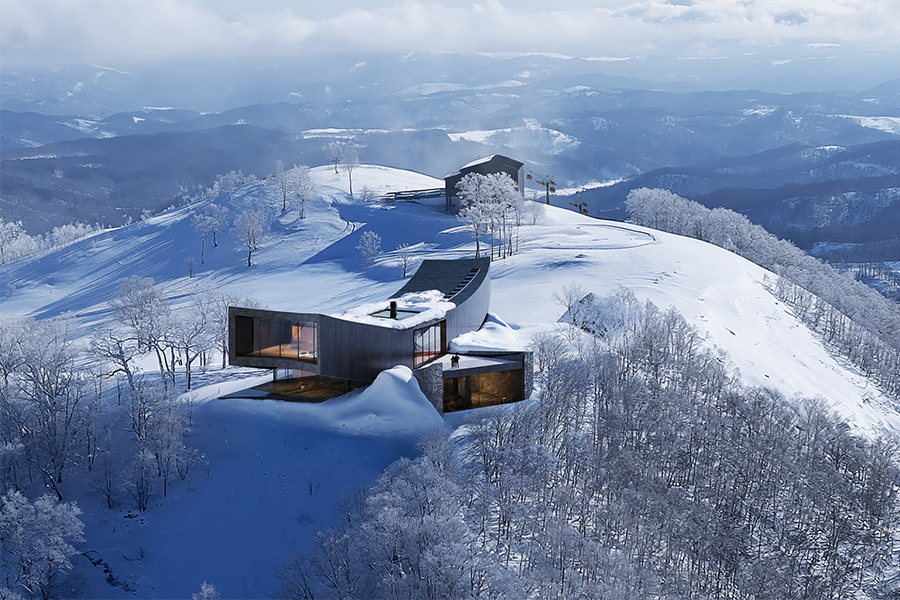Hardly an untapped destination, tourists have long sought sand and sun in Mexico. But the country is experiencing renewed enthusiasm and is a top country in Latin America for hotel development. “There’s quite a robust development pipeline when you talk about new construction, renovation, and conversion,” says Bruce Ford, senior vice president of Lodging Econometrics.
On a macro level, Mexico is No. 7 in the world for global development, with 41,715 rooms slated across 260 projects. Longtime leisure destination Cancún remains popular with multiple brands planting their flags, such as the 363-key Kempinski Hotel Cancún opening in the former Ritz-Carlton space, and the Margaritaville Island Reserve Riviera Maya and the Waldorf Astoria Cancun coming soon.
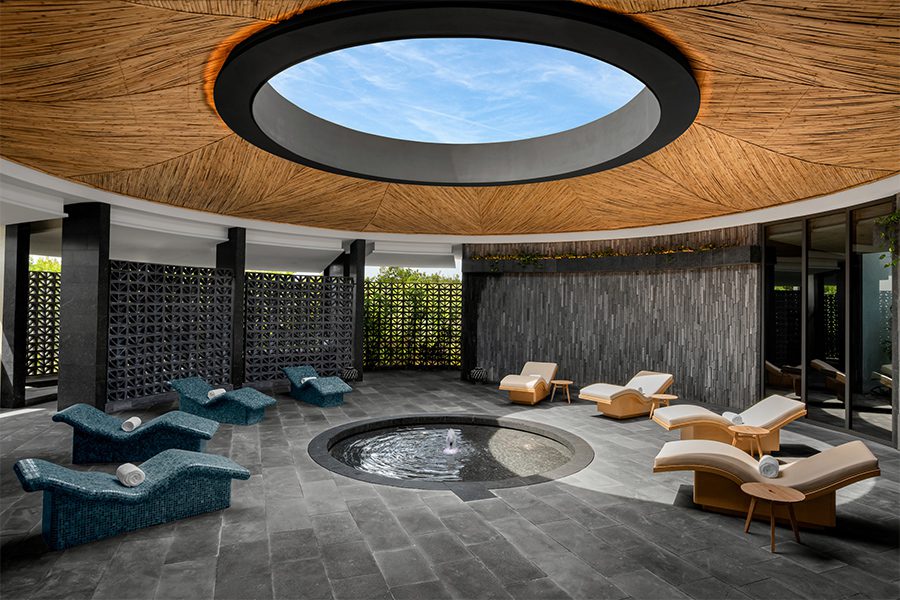
HBA drew inspiration from Mayan architecture and local cenotes for the Conrad Tulum’s tranquil spa
Tulum’s trendiness persists, with Ennismore announcing it will bring its hybrid hospitality concept Jo&Joe, which caters to a mix of travelers and wanderers, to the beachtown with 84 guestrooms spanning private rooms and dorms. Eco-conscious Casa Chablé Sian Ka’an opened in October, following the debut of the HBA-design Conrad Tulum Riviera Maya last January. Hyatt—which recently made its entrance in the centrally located city of San Miguel de Allende with the 44-key NUMU Boutique Hotel, part of its Unbound Collection—also plans to add 5,000 coastal rooms in Tulum and Isla Mujeres. Also on the Yucatan Peninsula, Belmond will reopen Maroma in May after undergoing renovations led by Tara Bernerd. The resort will offer 10 new waterfront suites and Latin America’s first Guerlain spa.

A rendering of the forthcoming Pool House at the Soho House Mexico City, starring lush greenery
In Mexico City, a wave of highly curated, art-centric properties is fueling a renaissance of sorts. There’s Casa Polanco, which opened in June and offers an exclusive 19 guestrooms. Designed by Monica Novelo Romo, it features works and sculptures by famed Mexican artists throughout. Then there’s Soho House Mexico City (the brand’s first club in Latin America) opening this year inside a renovated private residence, which will feature 100 artworks by artists with connections to Mexico. Later this year, IHG’s brand Kimpton will make its debut in the city with two adaptive reuse projects. And Mondrian Mexico City recently made a splash in the artsy La Condesa neighborhood.
Over in Baja California Sur, Auberge Resorts Collection’s THE WELL made its West Coast debut with the Nina Gotlieb-designed THE WELL at Chileno Bay with 99 guestrooms. St. Regis Los Cabos at Quivira, which will be located on 1,200 feet of oceanfront, will offer 120 guestrooms and 60 private residences. Less than a hundred miles away, Four Seasons Resorts and Residences Los Cabos at Costa Palmas debuted in 2019 with open-air buildings designed by Guerin Glass Architects to highlight the surroundings near the Sea of Cortez, which will soon be joined by an Aman (the resort and residences are currently under construction).

Green marble floors inside Casa Polanco’s lobby recall the nearby Parque Lincoln
Below, we dive into a few of the exciting new and forthcoming properties Mexico has to offer.
Hotel Cigno
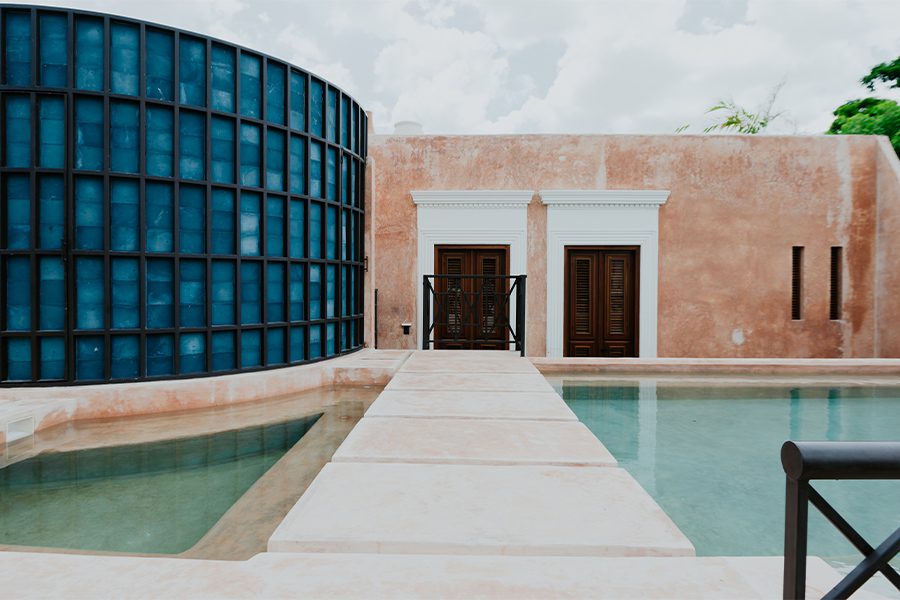
Housed in a former mansion, the outdoor pool at the Hotel Cigno, designed by Roger González, provides a place of respite
On the Yucatan Peninsula, architect Roger González and his team at Roch González Arquitecto recently restored a 19th-century mansion, transforming it into Hotel Cigno. “The key elements of the Yucatecan mansion over 100 years old were maintained, incorporating the comforts of our current era without sacrificing the presence of the history of the place,” says Cigno CEO Raúl Sánchez.
González took care to preserve some of the structure’s most unique elements including friezes, moldings, and blue-tiled mosaic floors with cannage patterning. “The refurbishment process made a virtue of traditional regional techniques such as chukum, a method for finishing stucco that was used in Mayan pyramids, granting it an appearance of rustic honesty thanks to the reddish hue of the Uxmal earth,” adds González.

Blue tiles accent the earthy palette inside Hotel Cigno’s restaurant Cocina Cigno
Inside the 10 guestrooms, Ticul stone from the Opichén region mingles with endemic tropical plants to instill a strong sense of place. Also on the property, a cistern that was discovered during the renovation process was transformed into a moody, two-room wine cellar. Bridging the past and present, “Cigno is a hotel with a unique soul,” says Sánchez.
Andaz Mexico City Condesa
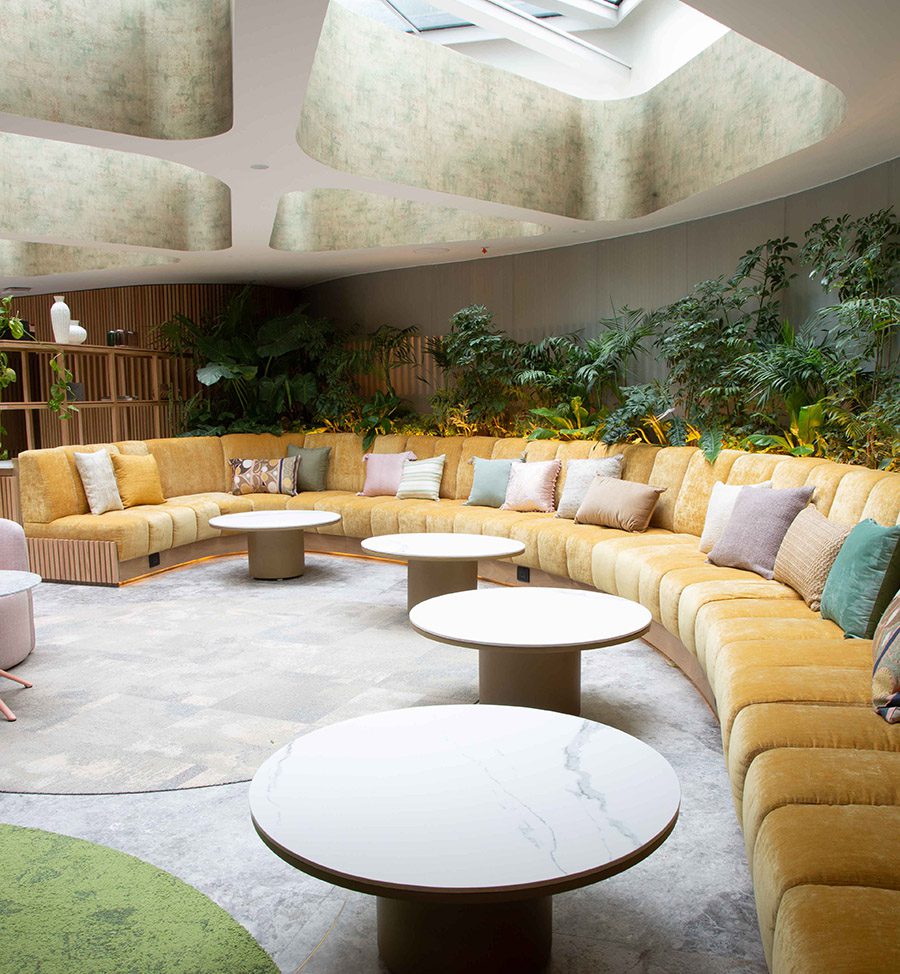
Organically shaped skylights drench the Andaz Mexico City Condesa’s Derba Matcha Cafe in natural light
Andaz Mexico City Condesa opened last November, marking the brand’s second location in the country after Riviera Maya. “The main source of inspiration was Mexico City’s visual richness, centered on the historic Aristos building, where modern styles, and present and contemporary proposals meet. We wanted to create the joy of a space full of life, movement, and history for guests,” says interior designer Constanze Martens of architecture and design firm AoMa Estudio. Consider the guestroom murals. Rendered in a purple palette (an homage to the jacaranda trees surrounding the hotel), the style nods to the work of José Luis Benlliure Galán, who originally designed the building. Below the murals, mosaic-tiled headboards serve as a love letter to the structure’s history and the original mosaic artwork in the courtyard.
The hotel design also pays tribute to Mexican architect Luis Barragán, known for his bold use of color and modernism pink, with “hot pink walls, saffron sofas, and magenta escalators,” says Christophe Lorvo, area vice president who oversees Hyatt’s growth in Mexico. Novel twists on amenities include a vinyl record library in the lobby, where guests can exchange records to listen to, as each room is outfitted with a record player. And Wooftop Beer Garden & Canine Club allows pets to be part of the leisure activities with a dog-friendly menu. Also on the rooftop, Cabuya boasts one of Mexico City’s highest rooftop pools on the 17th floor.
Banyan Tree Valle de Guadalupe Resort, Spa, and Winery

The Michael Rojkind-designed villas at Banyan Tree Valle de Guadalupe meld with the landscape
When it opens this summer, Banyan Tree Valle de Guadalupe Resort, Spa, and Winery will distinguish itself as Banyan Tree Group’s first proprietary winemaking property. Situated on 39 acres just 90 minutes from California in Mexico’s wine region, the agriculture-forward destination, designed by Mexico City architect Michel Rojkind, will be home to vineyards, a winemaking laboratory, a tasting room, fermentation rooms, and an underground cellar.
Also, a bio-endemic garden onsite will grow indigenous plants that will be employed in select spa treatments as well as in dishes at the numerous F&B concepts, which will include a cocktail bar, coffee shop, and three distinctive restaurants, including one overlooking the scenic valley. The grounds will also house 30 private villas with minimalist interiors offering a sense of quiet luxury.
Habitas San Miguel
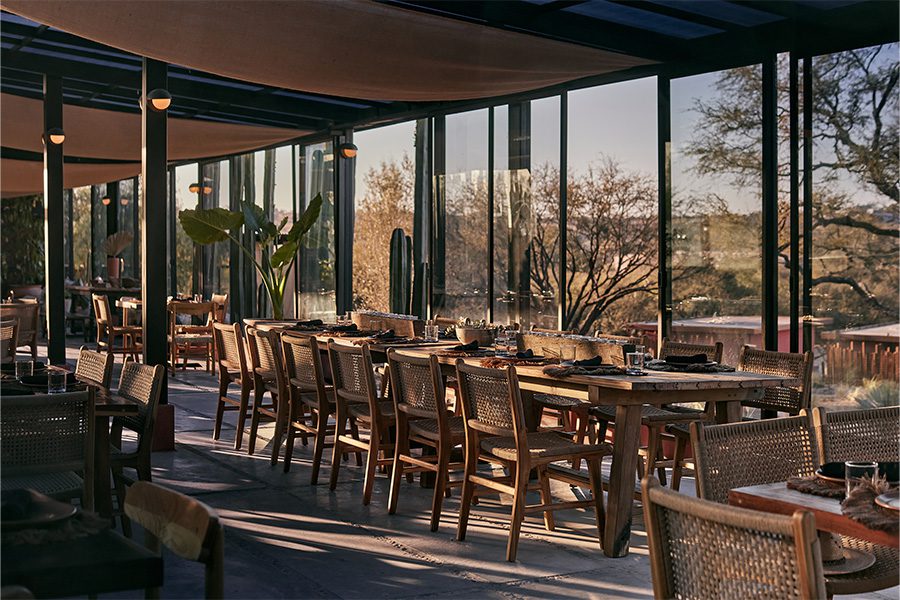
The restaurant at Habitas San Miguel incorporates the natural landscape
Sprawling across 24 acres in San Miguel de Allende, wellness-focused brand Habitas adds its third hotel to its Mexican portfolio, following its launch in Tulum and a subsequent outpost in Balacar. Surrounded by a landscape dotted with cacti and wildflowers, the flora and fauna are as much a part of the design of the property as the hotel itself. “Habitas San Miguel is the perfect intersection of nature and culture, and our brand’s wellness ethos,” says Oliver Ripley, cofounder and CEO of Habitas.
Standalone guest cottages lean on materiality to further strengthen the sense of place, featuring wood from local tree farms and walls finished with lime stucco and organic pigments to achieve an earthy color palette. Each of the 60 one-bedroom casitas are outfitted with private terraces and sliding glass doors, allowing nature to serve as the focal point amid the restrained interiors. At the communal restaurant Comunidad (one of two onsite), local ingredients are prepared using wood-fired techniques from the indigenous Otomí culture. “Guests can expect to feel immersed in the experience of the creative culture and nature. Our location on the outskirts of the city further ensures guests feel at peace,” adds Ripley.
This article originally appeared in HD’s February/March 2023 issue.


